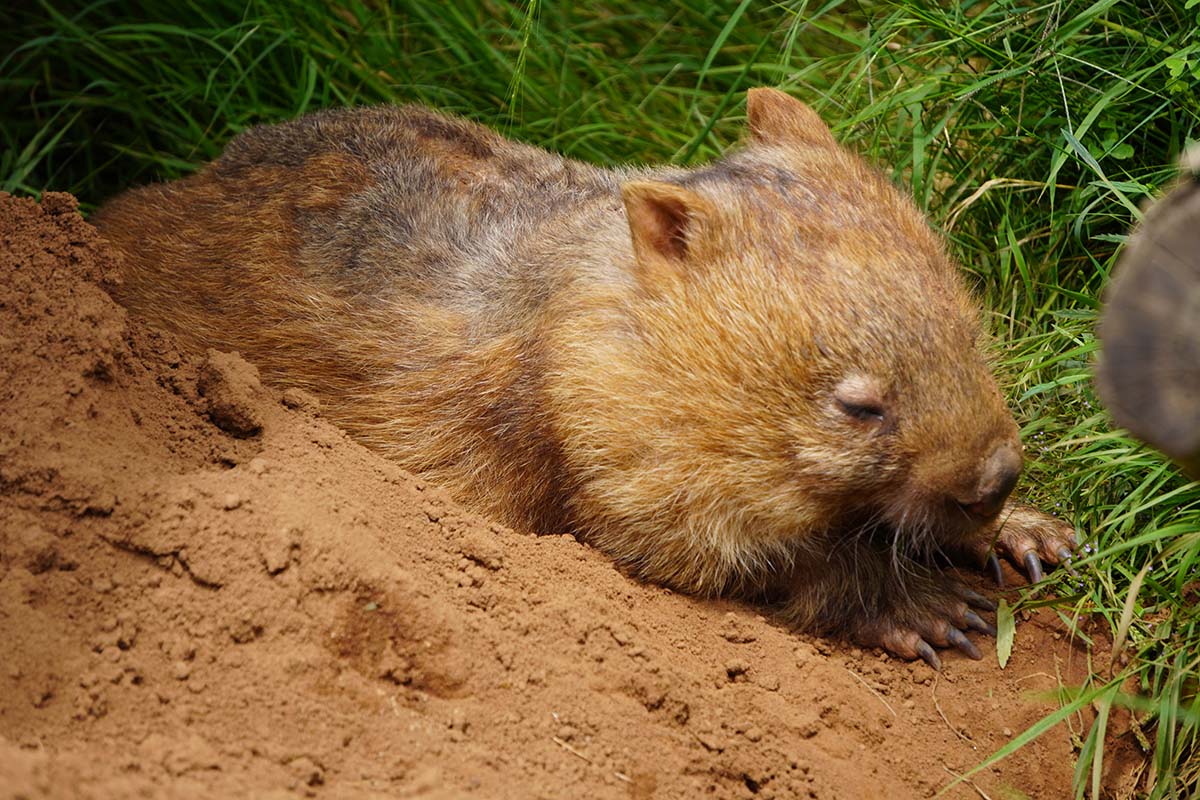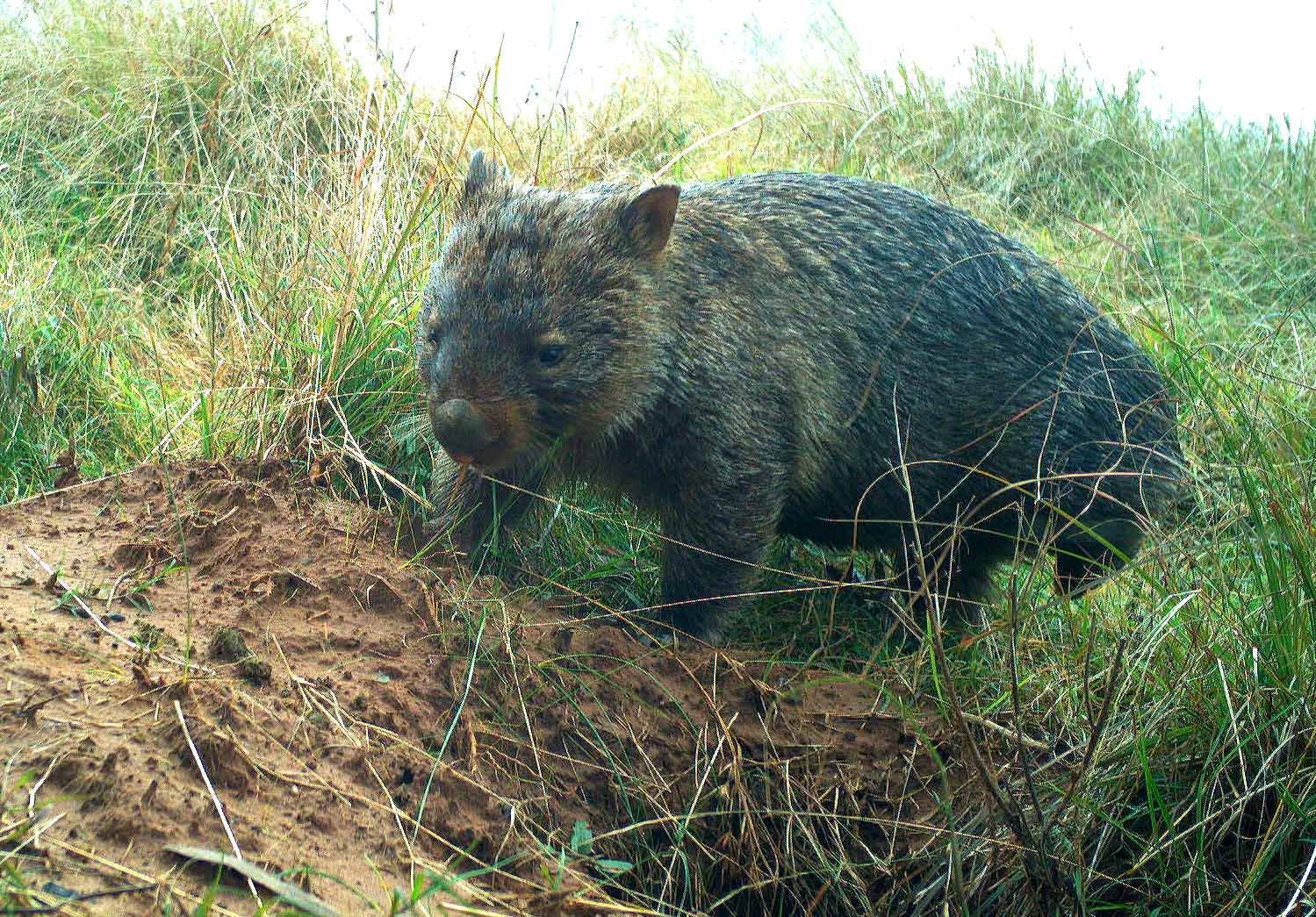Camden Wombats
Landcare
Established
2021
Issues
Invasive Weeds
Erosion
Fire Risk
Wildlife Monitoring
Caters to
Work Experience
Families
All age groups
Who we are
We formed late in 2021 with the help of Local Land Services Greater Sydney due to the ongoing threat of mange to wombats in the area. We aim to treat the wombat population at Camden Airport for mange, carry out wildlife monitoring using remote cameras and contribute to habitat restoration. Our team also supports locals with wombats living on their properties by providing advice and manage assessments.
Aeria (Camden airport) Local Land Services, the Wombat Protection Society of Australia and the Australian Wildlife Society are kindly supporting us in this endeavour.
The Site
You wouldn’t expect it, but Camden Airport is a refuge for native wildlife.
Camden Airport has an area of 54 ha next to the river which provides a habitat for a range of plants and animals.
This area supports one of the second largest wombat population in the Sydney Region, the endangered Camden White Gum and Rufus Pomaderris plants, and the River Flat Forest Endangered Ecological Community.
It is also an important wildlife corridor, allowing animals to travel between habitats without having to risk their lives crossing roads.
What is mange?
Mange is a big threat to wombats in the area. Mange is caused by parasitic mites which burrow under the skin. It is not native to Australia. Wombats are particularly affected by mange and can suffer a slow, painful death.
Symptoms can include itchy skin, hair loss, and the skin to become thick, and crusty which can affect their eyes and hearing. Without fur, they lose heat and struggle to stay warm. Wombats with severe mange will be seen out in the day trying to get enough food to power their metabolism to stay warm. This leaves them more likely to be attacked by dogs and hit by cars.
How is it treated?
The good news is that Mange is treatable. Treatment involves applying multiple authorised doses of medication to the back of their neck for several months – similar to the flea medication used on the back of the neck for cats and dogs. They need multiple doses to make sure the mites living in their burrows are killed as well as the ones under their skin. To do this, we put a flap over the entrance to the wombat burrow. We cut a hole in the flap and place a small container into it to hold the medication. When the wombat comes in/out of the burrow, the flap gets pushed up and the medication is poured out of the container onto the wombat’s back.
As development in the area increases, the airport habitat is becoming more important. Not only is local development destroying habitat, but all the concrete also absorbs heat during the day and then releases it at night, causing higher temperatures when wombats and other animals are most active.
These animals are flocking to areas on the river like the Airport because it is cooler near the water.
This makes it an ongoing challenge because new wombats can bring more mites to the site and reinfect wombats that have already been treated.
Importance of Wombats
Wombats increase the health of ecosystems and the biodiversity of the area because their burrows provide shelter for other animals during bushfires and extreme heat/cold, and their digging helps aerate the soil and let water penetrate deeper.
How to help
If you’re interested in getting your hands dirty and helping Camden’s wildlife on an ongoing basis, we need you! Volunteer activities include making and installing burrow flaps, refilling mange treatment dispensers, mapping burrows, checking monitoring cameras, analysing photos using computer software at home as well as bush regeneration activities.
We meet on the 1st Saturday of every month, 9.00-12.00 with a scope for extra days.
You can volunteer once a month, or once a week to help with the ongoing mange treatment or help from home by tagging wildlife photos.
If you see a wombat that looks sick or is out during the day, please report it immediately. You don’t need extensive wildlife training to save a wombat’s life. Call WIRES NSW 1300 094 737 or Sydney Wildlife Rescue (02)9413 4300.
You can get in touch with Camden Wombats Landcare in many ways, either email us directly or visit our facebook page.
We can’t wait to hear from you!



